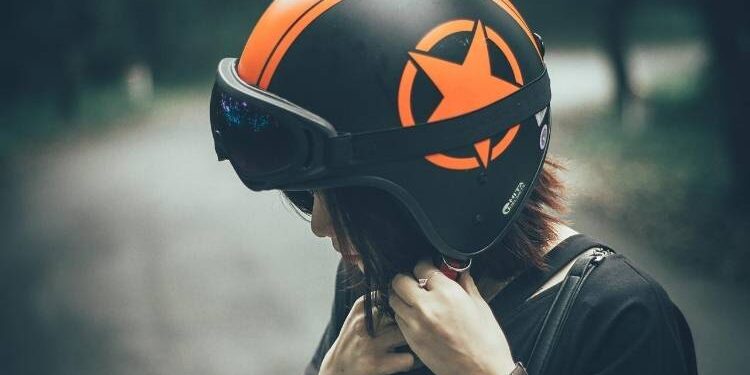Bike riding is a passion, a unique experience, adrenaline rush; wind striking your face, the open road is a whole level of different feeling.
But motorcycle accidents are the worst and most common ones. So, just make sure to protect yourself during bike riding.
Things you need to protect yourself are knee pads, gloves, and most importantly a good helmet for beginners.
So, now the question is what is the actual purpose of a helmet?
Helmets are designed to protect your skull, prevent skull fracture, and prevent the jelly mass in the brain from tearing apart during the injury to your head. But there is a limit to how much protection they can offer because humans are fragile beings too.
How do helmets work?
A good fitting helmet is the best choice you make to protect yourself from serious or even a deadly brain injury. Head injuries are one of the commonest causes of death for motorcyclists.
Helmets can neutralize glancing blows they can’t dead stop them but they can neutralize. Glancing blows are normal in riding a bike.
But if you will ride in a full-tilt as a telephone pole you will exceed the engineering limitations of even a very best helmet,
Studies show in crashes motorcycle helmets reduce the risk of death by 42% that’s a big number believe me. And reduce the risk of head injury by 62% even greater number giving you a solid reason for wearing a helmet and protecting yourself.
Most of the damage occurs at the front visor of the helmet. So, the front and chin areas are most affected. Open-face helmet can’t prevent this damage but a full-face helmet can.
So, always go for a full-face helmet.
All the helmets should be gone through standards and impact testing. You can find some amazing helmets on Helmetsavvy.
Stages of damage:
First damage occurs at the outer shell of the helmet so its first line of protection against damage. But it may flex in a crash so the inner layer is then the most critically important part made up of Expanded polystyrene. Density and thickness of polystyrene defines how good the helmet will cover the head.
A helmet with low density of EPS against head but high density EPS against the shell will not be affected by a minor incident.
The strap is critically important for keeping your helmet on in the case of a crash. Helmets don’t stay on the head or came off in almost 11% of all incidents and crashes.
This can happen if the helmet is too big or even if the strap is not properly fit. Proper fit is essential for protection.
A Motorcycle helmet prevents your skull from bouncing around in case of crashes.
Head injuries can cause a mild concussion to death. Motorcycle helmets surely increase your survival chances in crashes.
The helmet which can give enough protection is the one that fits you perfectly and is standard certified that is going to give you the best protection in the case of a crash.
Always opt for full-face helmets as they offer the highest protection and also they fit the best.
Helmets also provide buffeting at high speeds if they fit well. Also if you are wearing a helmet and it doesn’t fit well you will not even feel good wearing it as it can’t even stay on your head appropriately and can come off in danger.
How to choose a Helmet?
While choosing a helmet, the first step is to find out what your head size is. You can use a little retractable soft tape but you also use a piece of string and measure that one once you have your number usually in centimeters you will have an idea of your helmet size.
Size isn’t the only parameter but the shape of the shell and the numbers of available shell sizes also come into play when finding a helmet that’s the most comfortable for you. You can’t always find the exact size but you can perform some tests to find out if it’s the perfect fit for you.
So, the crown of the helmet should fit snugly but not create pressure points or hot spots it should however try to stay on slightly when you try to lift your helmet off your head.
You also need the eye-port to sit just above the brow line that way you don’t get any sort of visual impedance.
Grab the chin bar with both hands and attempt to move your head left to right inside the helmet and again you want minimal lateral movement. The cheek pads should snug in newer helmets. Because after some time it will be worn out and will not snuggle.
